Member profile
Underwater Art: Interview with Jason deCaires Taylor
Jason deCaires Taylor is a sculptor, environmentalist and professional underwater photographer. One of his most recent and renowned projects is Museo Atlántico, a collection of over 300 submerged sculptures in Lanzarote, Spain, which is the first of its kind in European waters. Taylor’s work is currently also being exhibited at Biennale Arte 2017 in Venice, Italy, till the 26th of November. As part of DAN Europe’s most recent campaign #WhyWeDoIt, Alert Diver attempts to delve into Taylor’s magical underwater world.
How did you become a diving sculptor?
I started my training as a sculptor around 20 years ago in London, when I was already diving. So after leaving art college I did lots of different jobs, including working as a diving instructor. Over the years, I started thinking more about how the sea could be an amazing creative space for art, and how artworks can be set up underwater to create artificial reefs.
With that in mind, around a decade ago, I decided to build an underwater sculpture park in the Caribbean. I started off small, in an area that had been decimated by a hurricane. By building the park, I wanted to rejuvenate the area and draw people’s attention to natural fragile areas. I’ve made around 800 underwater sculptures since then.

What drew you to the ocean, and what does it mean to you?
As a child, I used to live near coral reefs. My parents would often rent a boat at the weekend and we explore pristine islands in Thailand and Malaysia. I was very fortunate to be exposed to such amazing experiences at the early age of seven, or eight. It left a lasting impression in my mind, and made me want to explore both artistic boundaries and the vast sea.
The ocean is this incredible space where I can disconnect, a silent world where I’m completely alone in my thoughts. It’s like crossing a line into another world that is completely detached from our own. It’s a very special place indeed.

What is your creative purpose as an artist?
My projects are not just about their artistic aspect, but also about conserving the marine environment. So my works have several different goals. On a practical level, they create artificial reefs, providing an alternative surface area for corals and different creatures to live on, as well as habitat spaces where creatures can take refuge.
On the wider end of things, the aim is to draw people away from fragile marine habitats and draw them deeper into the sea. It’s a hidden world, often forgotten. Through my work, I want to draw attention to the many issues affecting our oceans, whilst highlighting its incredible fragility and wonder.

“The ocean is this incredible space where I can disconnect, a silent world where I’m completely alone in my thoughts.”

Why do you find it so important to raise awareness through your art on how oceans are neglected by the human race?
I’ve been diving for over 20 years now. I’ve seen areas that were once pristine; incredibly vibrant coral reefs full of all sorts of different life. Now, when I return to some of those same spots, I find they’ve been completely decimated. Now, every scientific prognosis for the future of the ocean is extremely grave. I’m very concerned about this. I want my children to be able to experience what I got to experience when I was their age.

Does art have a place in raising awareness and respect for our oceans?
I think art is a crucial tool. Scientists can relay facts and information, but as we all know, humans are very impulsive and emotional creatures. I feel art has the ability to really connect people. I hope that through this level of connection, people will be motivated to help protect our seas.
Tell us about your project in Lanzarote, and what drew you to its location?
Museo Atlántico is around 400 metres from the shoreline of Las Coloradas, and around 12-14 metres deep. It consists of 12 different installations, with around 300 works interspersed within the museum’s different zones. Visitors descend into the museum with a trained guide and are taken through a sequential tour of each exhibit. Following this, they are taken to the exit point back to the safety of their own boat.
I’d already accomplished several projects in tropical waters, mainly in the Caribbean, and I was very interested in working in a new environment. This island is quite special, because it has a long history of environment-related art, with many land installations that work closely with the environment. So Lanzarote was an ideal spot to realise this project.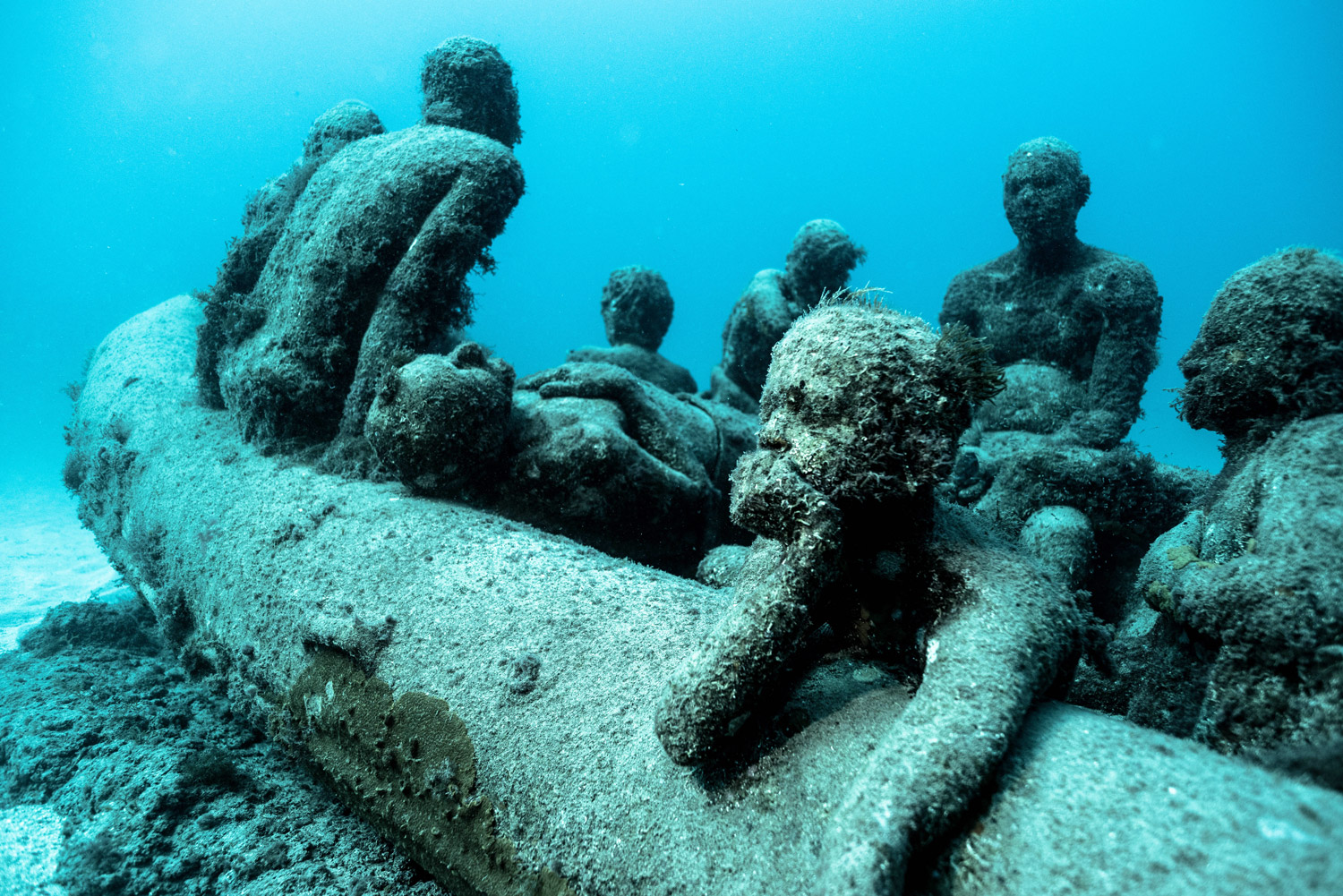
How did you feel once the project was completed and people started visiting the museum?
It was a huge undertaking. The permitting, surveys, fundraising, politics… there were so many different key elements to planning out this project and getting it off the ground, not to mention the actually building of the museum which was an even bigger phase.
Now that it’s finished, I’m extremely relieved. I enjoy seeing more and more divers continuously visiting and appreciating the museum. But what I loved most was seeing the site being colonised by the area’s wildlife, integrating naturally with the marine environment.

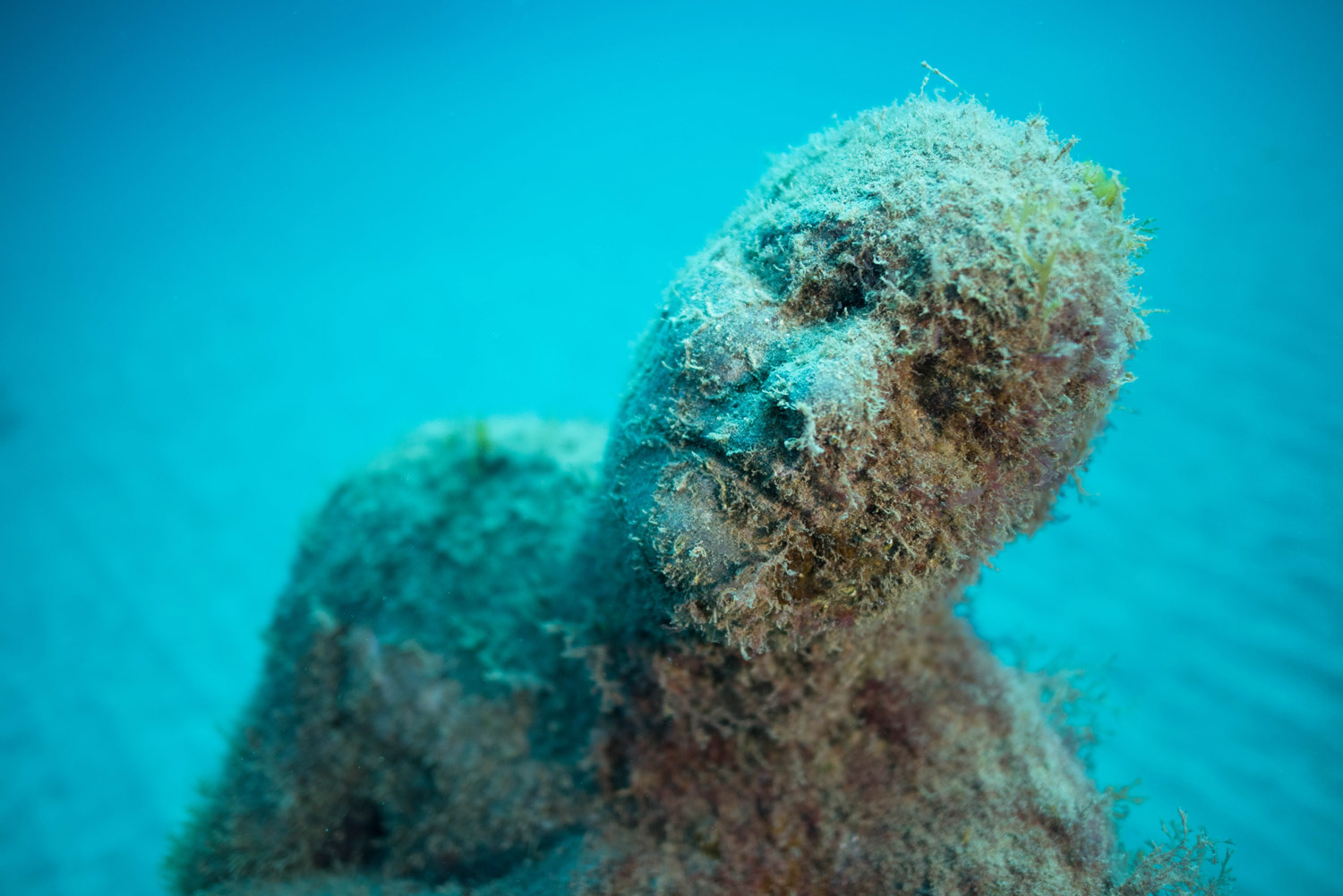
You still have many other projects in mind. What drives you to continue to create?
I’m always looking for new environments, new concepts, and different ways of discussing the threats our oceans are facing. This, along with always aiming to overcome the next presented challenge, tends to be my main driving force.
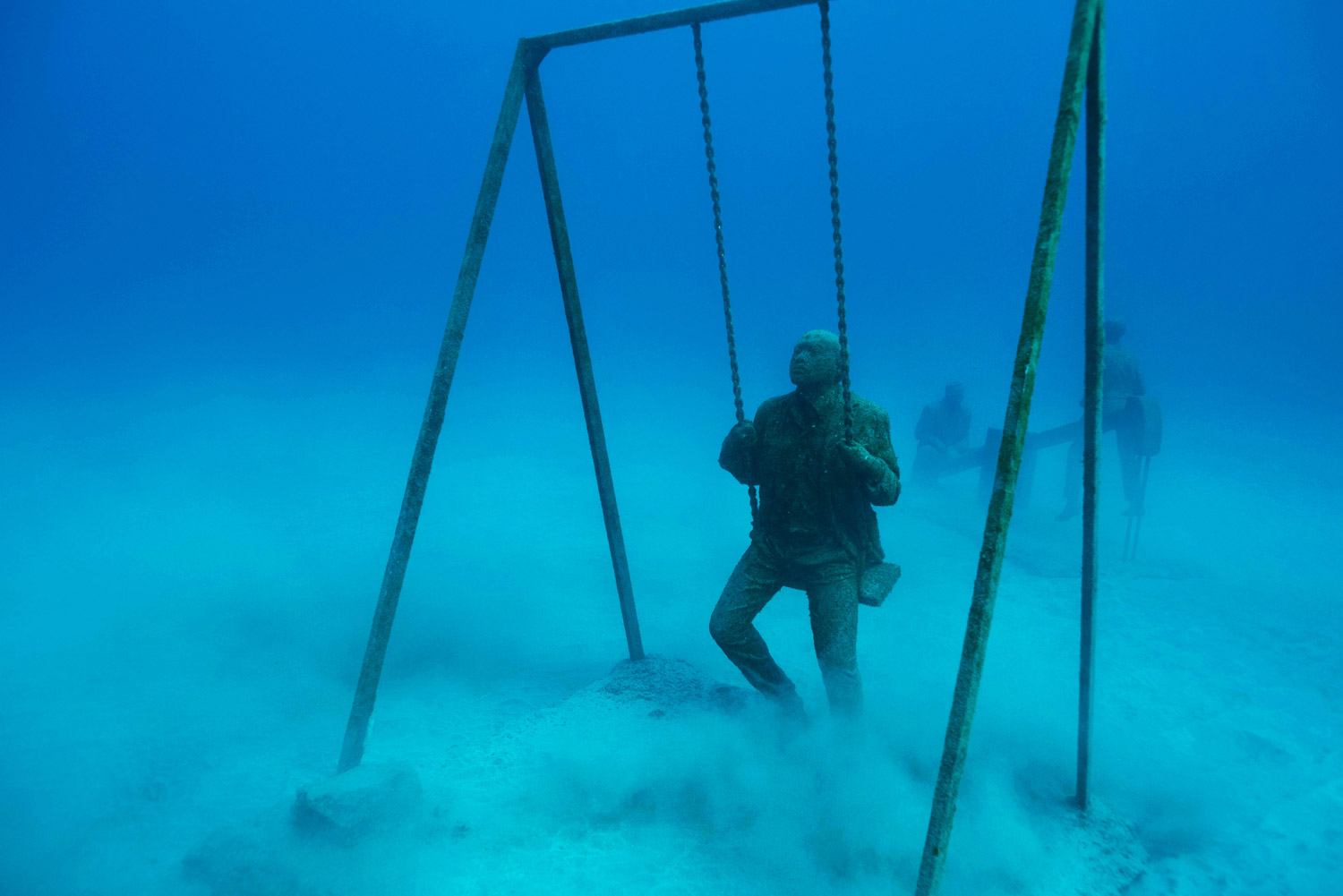
What do you want people to learn from what you create?
We tend to forget that we ourselves are a natural part of the environment. And there’s something quite important about being covered with marine life and being absorbed back into the planet. So I hope people take away that we are as dependent on the environment as the environment is dependent on us. Unfortunately, this relationship is rarely balanced.
It’s all about having a different outlook on our own lives. I think that incorporating modern concepts into this sort of dynamic underwater environment can enable us to briefly step back from our own lives and to look at ourselves in a different context.
In your TED talk, you stated that we should treat the ocean as a museum, and protect it accordingly. Why do you believe that this is the case?
We’ve called these projects museums because a museum has a very specific value, and I wanted to attribute that same value to our oceans. When we put objects in a museum, we tend to think of them as being precious, worth conserving and appreciating. I want people to have that same relationship with our seas. The ocean is an incredibly diverse and beautiful underwater area which is often forgotten. By assigning it the same value as a museum, I hope people’s relationship to the ocean changes. I want to continue changing this relationship so that the ocean is no longer something people fear, but something they realise they should respect and cherish.
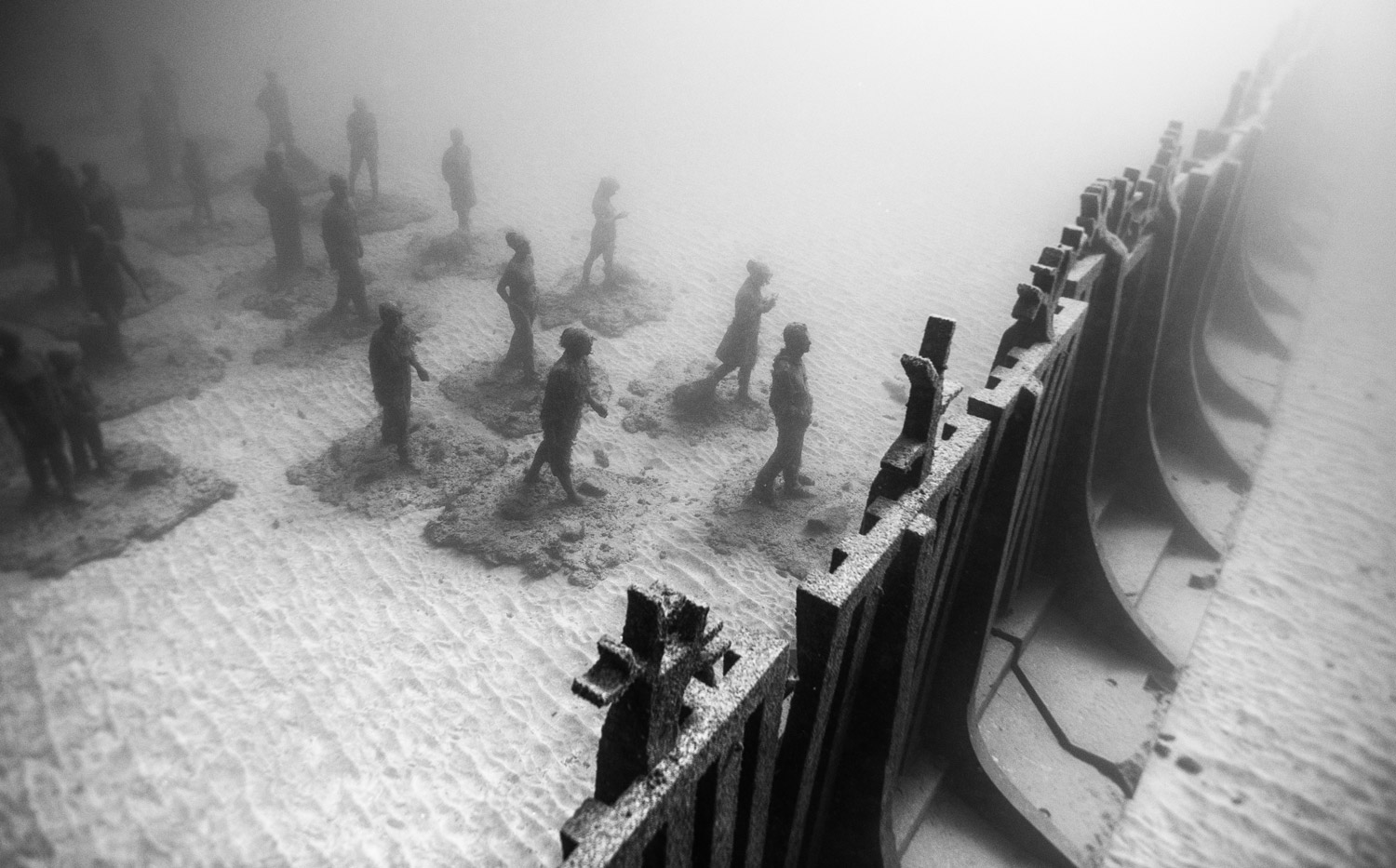
How important is safety for you when exploring the underwater world?
Safety is a vital consideration in all my projects. I’m very fortunate that a lot of the time I’m able to choose where I want to install my works, which enables me to choose places that are very safe, easily accessible, and located at a reasonable depth. This allows me to encourage more novices to explore the underwater world, and to do so in a very controlled environment.
A lot of my museum projects have marine park rangers monitoring the site, we have descent buoys and ascent buoys, and we also train guides to take people on tours through the museums, so that the diving is safe at all times.
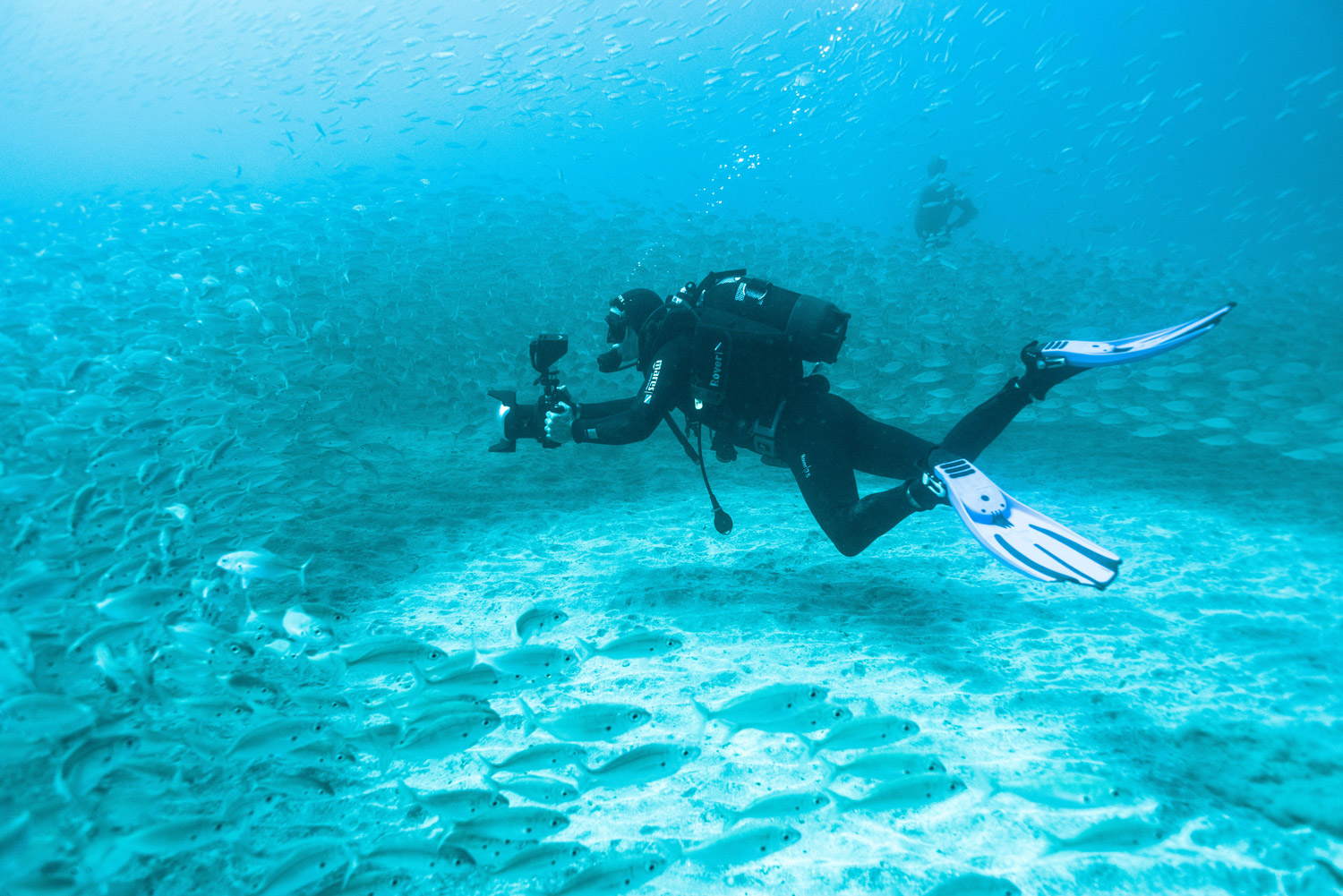
How does DAN support you, both as an artist and a diver?
Working in a marine environment has its dangers, especially in the case of my unusual and challenging career doing underwater sculptures. Having that security from DAN, and knowing that I’m covered in the event of an emergency, is priceless.

